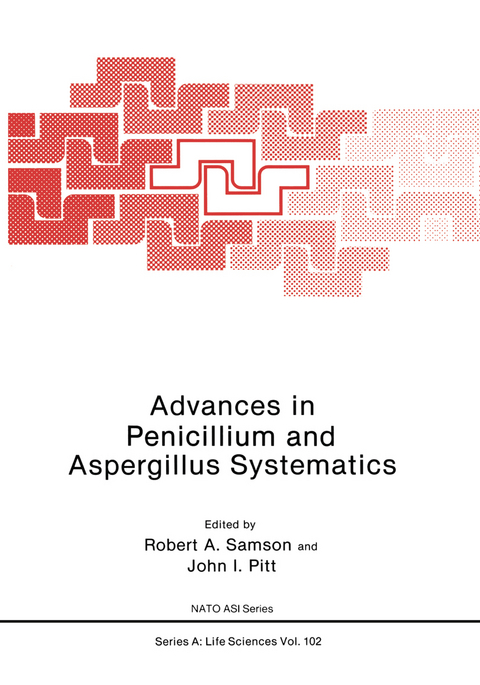
Advances in Penicillium and Aspergillus Systematics
Springer-Verlag New York Inc.
978-1-4419-3204-4 (ISBN)
In the past ten years, several laboratories have carried out taxonomic research resulting in a number of valuable publications. However, the differences in methodo- logy and species concepts made comparison between the diffe- rent classifications difficult. This confusion in the taxo- nomy and nomenclature of common species is a great handicap to applied and industrial research.
The typification and citation of the generic name Penicillium.- Dierckx’ contribution to the taxonomy of Penicillium.- Typification of Aspergillus and related teleomorph genera.- Typification of the Species of Aspergillus and associated teleomorphs.- Infrageneric taxa of Aspergillus.- The penicillus.- Descriptive terminology of the conidiogenous structures in Aspergillus and Penicillium.- The naming of chemical variants in Penicillium and Aspergillus.- Media and incubation conditions for Penicillium and Aspergillus taxonomy.- Evaluation of some morphological features of asymmetric Penicillia on different media.- Bridging the gap: Taxonomists and food mycologists.- The closely related species of subgenus Penicillium — a phylogenic exploration.- A revised key to Penicillium Subgenus Penicillium.- Revision of recently described Penicillium taxa.- The genus Coremium and the synnematous Penicillia.- Inherent problems in Penicillium taxonomy.- A new taxonomic scheme for Penicillium anamorphs.- Aspergillus: an overview.- The theory and practise of distinguishing species of the Aspergillus flavus group.- Similarities between the genera Stilbothamnium and Aspergillus.- Classification of fungi through nucleic acid relatedness.- Ecological adaptation and classification in Aspergillus and Penicillium.- Serological approaches for identification of Aspergillus and Penicillium species.- An integrated approach to Penicillium systematics.- Profiles of primary and secondary metabolites of value in classification of Penicillium viridicatum and related species.- Classification of asymmetric Penicillia using expressions of differentiation.- Taxonomic implication of hybridization of Penicillium protoplasts.- Solutions to some problems in Aspergillus taxonomy using the scanning electronmicroscope.- The Trichocomaceae: Relationships with other Ascomycetes.- Nomenclatorial and taxonomic problems in the genus Eurotium.- The ascomycete genus Penicilliopsis and its anamorphs.- Contribution to our knowledge of Aspergillus teleomorphs: some taxonomic problems.- Secondary metabolites as an aid to Emericella classification.- Are the species of Penicillium as imperfect as we think?.- 7: Recommendations.- List of workshop participants.
| Reihe/Serie | Nato Science Series: A ; 102 |
|---|---|
| Zusatzinfo | X, 483 p. |
| Verlagsort | New York, NY |
| Sprache | englisch |
| Maße | 178 x 254 mm |
| Themenwelt | Naturwissenschaften ► Biologie ► Botanik |
| Naturwissenschaften ► Biologie ► Mykologie | |
| ISBN-10 | 1-4419-3204-6 / 1441932046 |
| ISBN-13 | 978-1-4419-3204-4 / 9781441932044 |
| Zustand | Neuware |
| Informationen gemäß Produktsicherheitsverordnung (GPSR) | |
| Haben Sie eine Frage zum Produkt? |
aus dem Bereich


